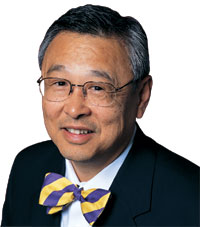
Larry Matsuda
By Larry Matsuda
For Northwest Asian Weekly
I am against both of your proposals and variations you suggest for the Chinatown-International District (CID) Sound Transit station.
First, you say there are two major options with variations. Some CID community people have described the choices as bad and bad. This is the usual ploy used by city planners—to say there are ONLY two choices. Limiting choice controls the narrative for the community. The planners don’t want authentic community engagement, but instead just want what is cheap and fast. Nevertheless, there are other choices that are not cheap and fast that should be put on the table:
- For example, use the existing Union Station for the light rail. If it will not work, demolish it and rebuild it brick by brick on top of the new structure so in the end, it looks the same. Or just demolish it. It must be a historic landmark, but the CID is supposed to be a protected area and is ruled by some advisory committee. I think it is the CID, so what is the difference?
- Use the north parking lot of Lumen Field and build a station there, and on top of the station, make a 10-story parking garage so that Lumen Field gets a parking garage. Connections can be made from Lumen Field to Union Station and use Union Station since it already exists.
- Use land in the SODO area where it is industrial and doesn’t impact an existing community.
- Use the old immigration building and tear it down or retain the facade if it is historic.
To say there are two options with variations is ridiculous.
Where are the Peter Steinbrueks of Seattle now and why haven’t planners and architects been instilled with the same sense of preservation that saved the Pike Place Market to make it world renowned? Instead, it is the same old “make it cheap and make it fast” mantra with two options. It was that same limited thinking that laid tracks in the bus tunnels that did not fit any operating system and the same thinking that got “Big Bertha” stuck in the tunnel for months (or was it years)? Make it cheap and make it fast, should be replaced by clear thinking and concern for the community impacted.
Finally, I would say that this project fits the Boeing approach where one lead person said, “We never have time to plan it right, but when it goes bad, we always have time to do it over again.
I urge the planners to listen to the CID community and look for creative solutions that do no harm to the CID.
Make it right, not cheap!



